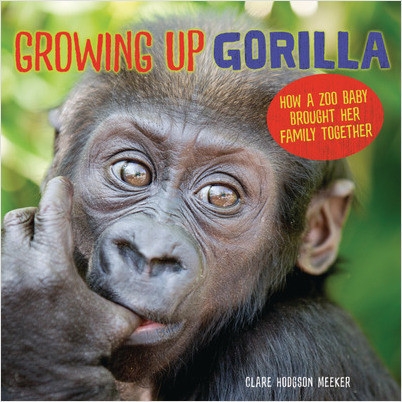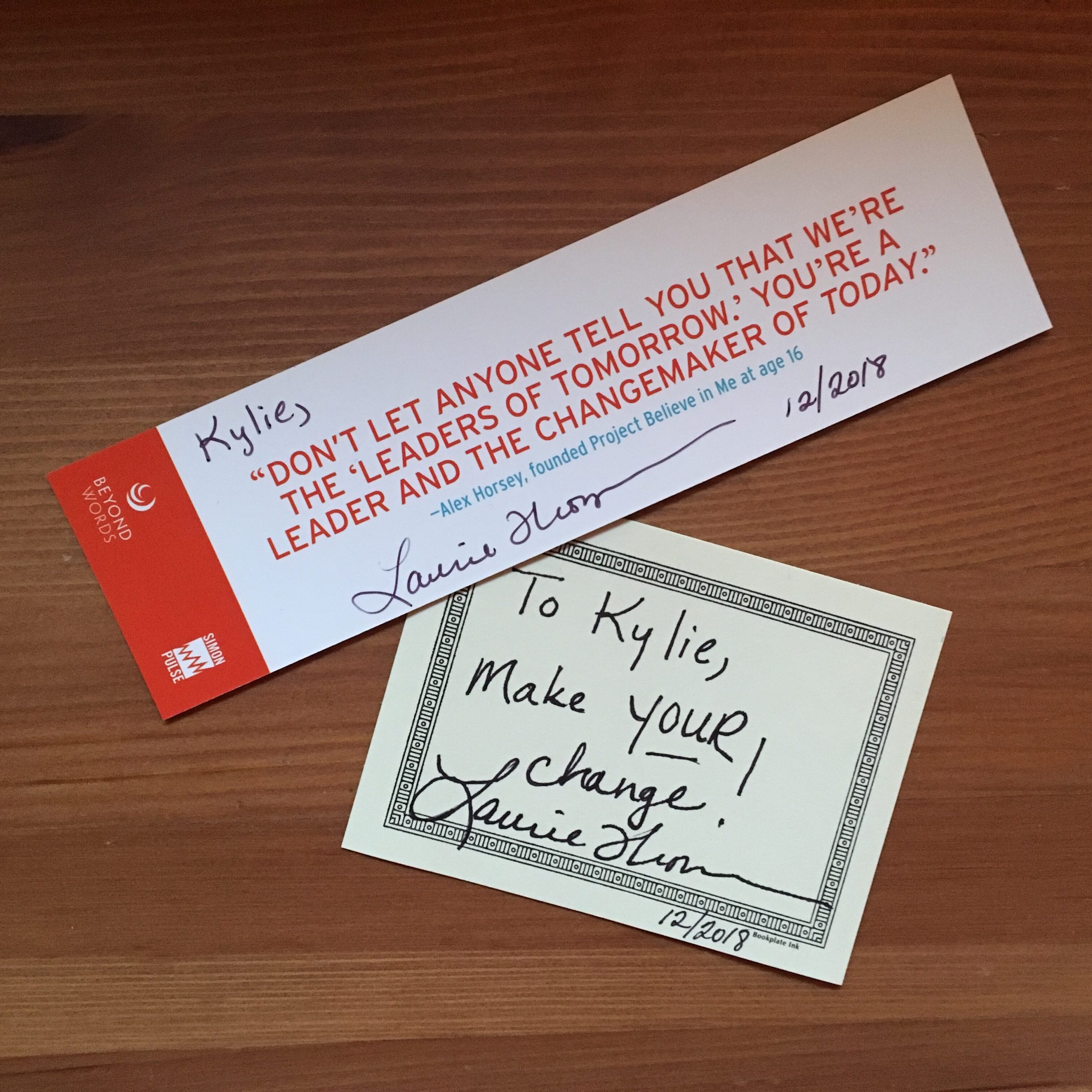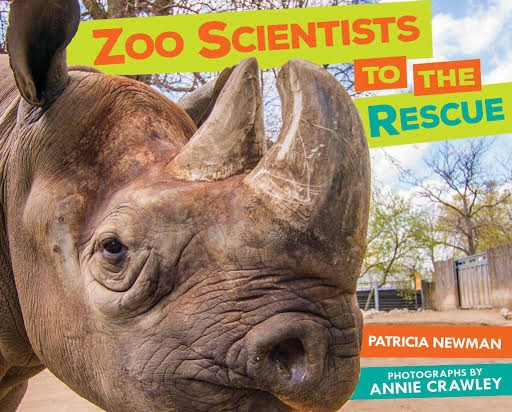I’m struggling to write a poetic picture book. To fill me with the metaphor, imagery, rhythm and meter that I’m striving for, I’ve been reading other books of poetry. Two interesting things happened during today’s readings…
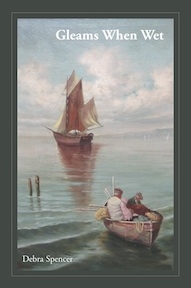
First, I was reading Gleams When Wet by Debra Spencer. I had picked it up at Half Price Books on a whim, since I’m mostly searching for ideas that have to do with water. Interestingly, it’s mostly set in the Monterey/Santa Cruz, California, area, which is where my oldest child is currently studying marine biology, so that was a fun connection. There are some beautiful and intriguing poems in here, as well as insightful commentary on life. It made for quite an enjoyable afternoon. (Yes, sitting and reading poetry all afternoon is sometimes actually my job. How lucky am I!?) What particularly struck me, however, is the inscription from the author (“To XXX, another adventurous father, with love from Debra”) and the handwritten card still tucked inside: “Happy birthday, XXX — I think you’ll enjoy this. Her poems are wonderful! See page 54! I also love Old Sailor’s Manifesto (p. 34) — and many others. Enjoy! Love, Mom” (*Note: Name changed to XXX to protect the innocent. 😉)
When I first read these words, I was instantly saddened. His mom had poured so much love into this thoughtful gift (not to mention it was personalized by the author)! How could he have given it away to end up on the shelf at my local HPB? But then I thought, selfishly, how lucky I was that he did, else I would never have happened upon it in my random HPB treasure hunt! Then I thought, maybe he read them and they just didn’t connect. It’s kind of sad that Mom missed the mark, but hey, it happens. Hopefully, he appreciated the thought, at least. Or maybe he read them and loved them, taking pictures of or typing up his favorites to file them away digitally rather than cluttering up his physical space. In the end, I’ve decided, it doesn’t matter why he didn’t treasure it. The real gift was in the giving. No matter what XXX felt about the gift or his reasons for passing it on, it warms my heart to think that his mom loved him, that she also loved words, and that she wanted to share them with him. As I struggle with my poetry project, I have often thought that perhaps it’s not worth it, perhaps it’s too far outside of my wheelhouse and I should stick to what I’m good at, perhaps no one will ever read or care about my words. Perhaps Debra thought that, too, before Mom came to get Gleams When Wet signed for her son. Perhaps, if I keep struggling, some other Mom will lovingly buy my poetic picture book for her child, and I’ll to get sign it, “To XXX, with love.”
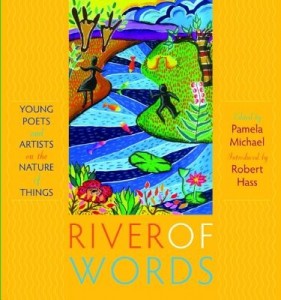
Another book that struck me was River of Words, edited by Pamela Michael. It’s a collection of poems written by young people–many as young as 6 or 7–about the natural world. And. it. is. so. good! Not only did it do exactly what I was hoping for–filling my artist’s well with even more water images and metaphors to potentially use in my own project–but it was incredibly inspiring as well. Yes, these young writers are clearly very talented, but they are certainly not professional poets. Yet, their poems sing with meaning. The depths of what they are able to say with so few words reminds me why I’m trying to complete this project in the first place, to convey something that is deep and meaningful to me to young readers. And the success the poems achieve in conveying each individual author’s essence gives me hope that perhaps my poetry can one day make that kind of connection with readers, too.
So, thank you to the poets out there struggling to make your words and meaning flow. Thank you to publishers who still believe in creating beautiful poetry books for children and adults. And thank you to everyone who buys books to share with those you love. 💛
 Laurie Thompson
Laurie Thompson
Blog Tour: Growing Up Gorilla by Clare Hodgson Meeker
Today I’m thrilled to be a part of the blog tour for Clare Hodgson Meeker’s new book, Growing Up Gorilla!
GROWING UP GORILLA
by Clare Hodgson Meeker
Millbrook Press/September 3, 2019
Grades 3–6, 48 pages
Here’s what the publisher says about Growing Up Gorilla:
This heartwarming true story chronicles what happened after a mother gorilla gave birth for the first time and then walked away from her newborn baby at Seattle’s Woodland Park. The dedicated staff worked tirelessly to find innovative ways for mother and baby to build a relationship. The efforts were ultimately successful, as baby Yola bonded with her mother and the rest of the family group.
And here are my thoughts about Growing Up Gorilla:
This beautifully photo-illustrated nonfiction is both meticulously researched and lovingly told. Meeker does a fantastic job of bringing this true story to life in a very kid-friendly way, bringing us into the world of both the gorillas and their keepers in a way that keeps readers thoroughly absorbed at all times. There is something for everyone here, with plenty of drama and suspense as well as heart-tugging emotion and (spoiler alert!) a happy ending.
The book also contains a table of contents and extensive backmatter, including an author’s note, further reading/websites/videos, glossary, index, maps, primary source quotations/images, sidebars, and more.
AND, here’s my interview with the author of Growing Up Gorilla, Clare Hodgson Meeker!
LAT: Can you describe your writing process? Did Growing Up Gorilla require any particular changes to how your typical process?
CHM: Normally I don’t start writing a book until I’ve worked out the arc of the story from beginning to end and done enough research and interviewing to feel ready to tell the story with excitement and confidence. Preparing a proposal helps me organize my thoughts — outlining the story with chapter summaries helps me think in scenes and how I’m going to thread in the factual information I think is relevant. Once I have that, I can begin writing my first scene of the book and continue chronologically through the story. The only change in my writing process with Growing Up Gorilla was having to write a full draft before interviewing the gorilla keepers who were directly involved with helping Yola and her mother Nadiri bond. I was able to interview them once I had a publisher on board, which satisfied the Zoo’s requirements. However, the zoo staff did give me some access to the Keeper’s Daily Record book, which included their notes of what happened during the first few months after Yola’s birth, to help me write the first draft.
LAT: What do you find most challenging about writing for kids? About Growing Up Gorilla in particular?
CHM: I’ve taught writing in the schools to children for many years. When we talk about plot and what makes a story interesting, kids agree that there needs to be a problem that has to be solved and a main character they can relate to who wants something and/or has to solve the story problem. In writing a book about a baby gorilla whose mother initially refused to care for her after her birth, my challenge was to get children to relate to these characters and care about their problems. Children’s books should be action-oriented and avoid too much description or flashback. I had to choose carefully the places where I slowed down the action to describe a scene in more detail — like the night Nadiri went into labor where I wanted to show the close relationship between Nadiri and the infant care specialist who had hand-raised her at birth after Nadiri’s mother rejected her. I don’t believe in writing down to a certain grade level or limiting word choice to a grade-appropriate list. I think about presenting the story in the most natural way I can as though I am telling it to the reader sitting next to me.
LAT: What authors and or books do you most admire, and why? Did you have any specific mentor texts that you looked at for Growing Up Gorilla?
CHM: Katherine Applegate’s middle-grade novel The One and Only Ivan and her picture book Ivan: The Remarkable True Story of the Shopping Mall Gorilla are fantastic examples of a gorilla character and story that children can relate to and empathize with, in both a fictional version and in a more condensed nonfiction format.
CHM: I am also a big fan of Sy Montgomery, who has written many of the Scientists in the Field series books published by Houghton Mifflin Harcourt. Her voice is so distinctive as she takes you on an adventure shadowing biologists and naturalists who are studying animals in the wild around the world and weaving in fascinating facts about them.
LAT: Outside of the writing itself, what kinds of things do you do that you feel help your writing career?
CHM: I am a life-long learner. I love taking classes in different writing genres, from poetry and picture books to essay and novel writing. Hugo House in Seattle is a wonderful place to take classes, get inspired, and meet others in the writing and reading community. I also enjoy writing conferences where I can get tips on writing and the business of writing listening to editors and talking with fellow children’s book authors.
LAT: What advice would you give to someone who is interested in writing nonfiction for kids?
CHM: Children’s nonfiction is a very popular genre today, especially STEM subjects (science, technology, engineering, and math). My advice is to choose a topic that you are excited about and willing to immerse yourself in, so that you can feel confident writing a story that kids and publishers will love. Think of creative ways to present your book idea, like Laurie Ann Thompson did in her Two Truths and a Lie series. It also helps to include themes that reflect the current elementary science or humanities curriculum standards so a publisher can market your book to schools and libraries.
LAT: Wow, thanks so much for that shout out, Clare! And thanks so much for including me in the blog tour for Growing Up Gorilla and for taking the time to do this interview for us.
Please check out the rest of the Growing Up Gorilla blog tour stops on the schedule below!
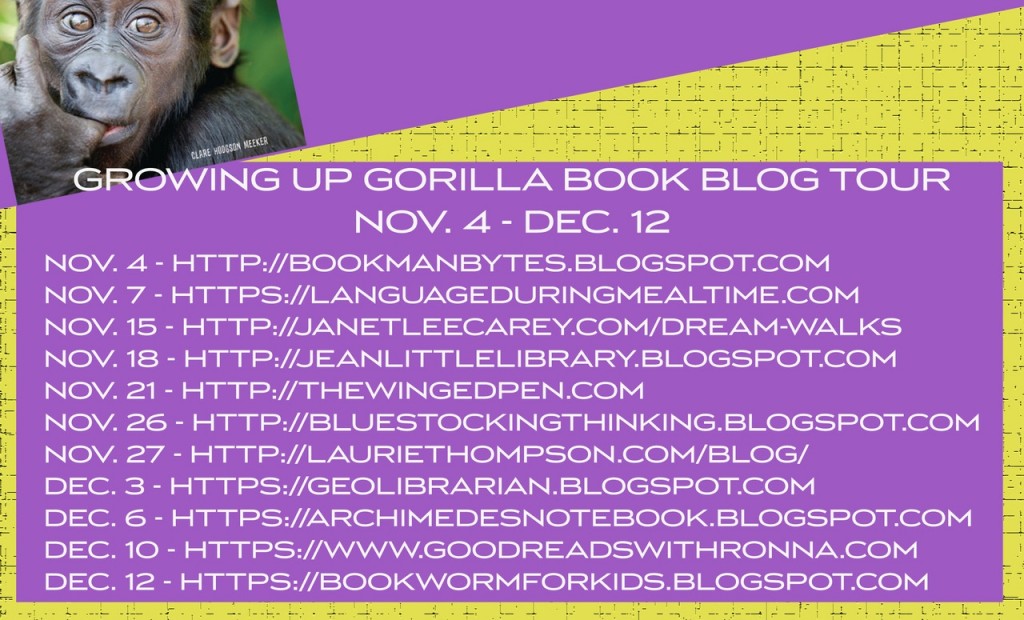
Emmanuel’s Dream wins CA Young Reader Medal!
A few weeks ago I was honored to travel to Pasadena, CA, to the California Library Association conference to receive the California Young Reader Medal for Emmanuel’s Dream. This is a very special award because the winning book in each category is chosen by the kids themselves.
First, the award tea itself. There were teas and sandwiches and all kinds of yummies, and look at the lovely decorations:


It was fun hearing the other speakers and getting to chat with the librarians during the book signing. And it all came with an honest-to-goodness medal!
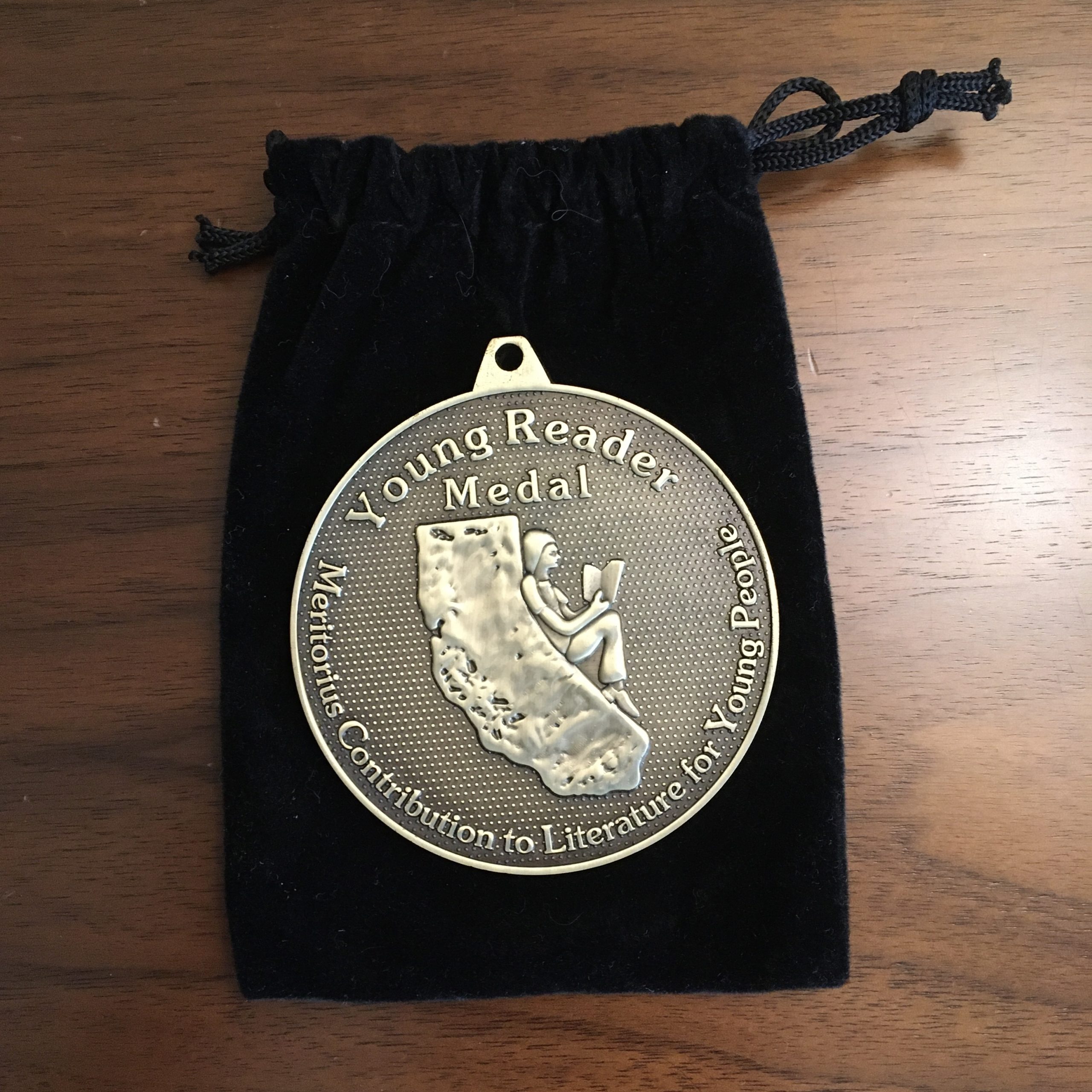
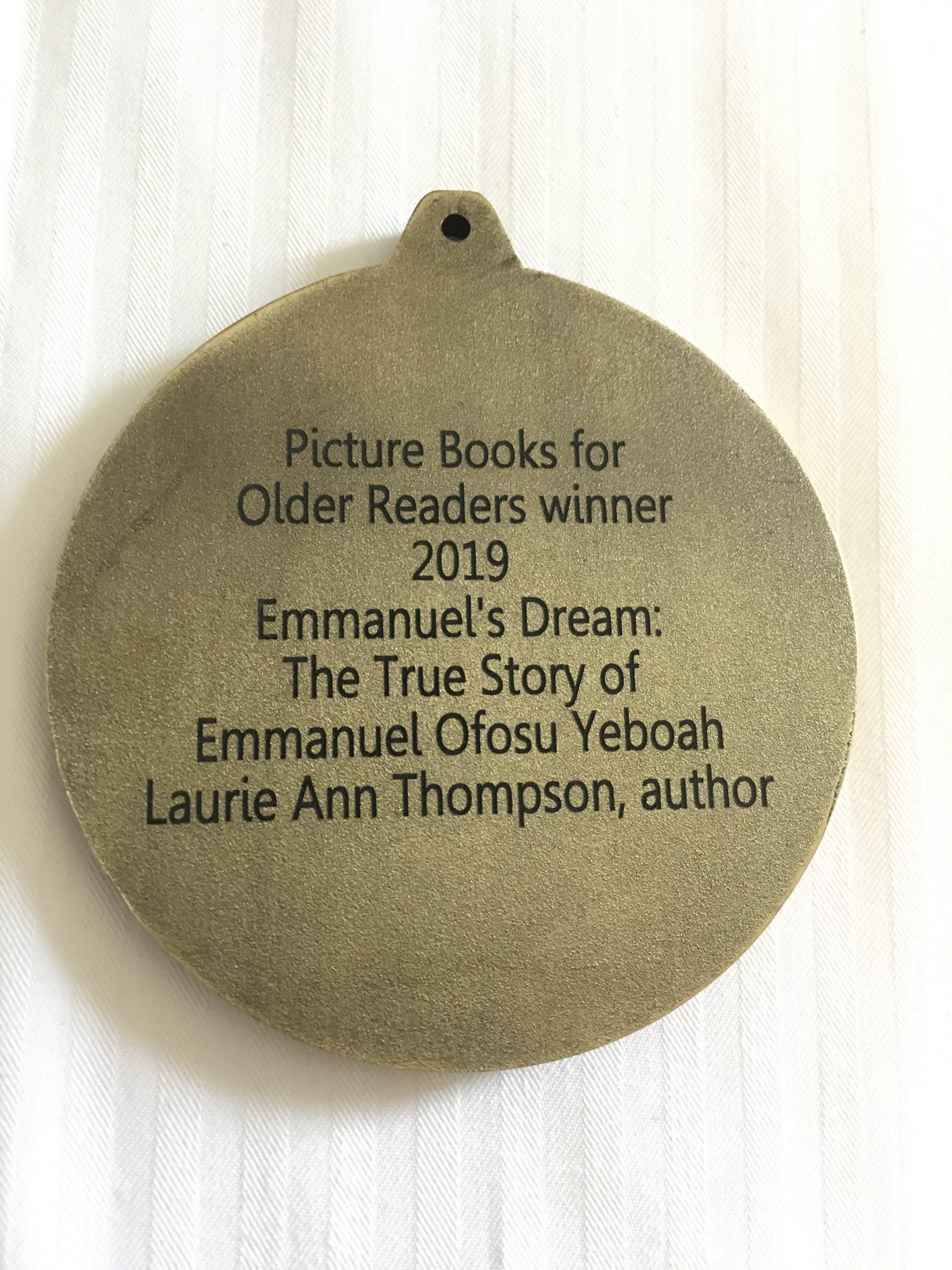
After the ceremony, I had some time to walk around and explore the city. The weather was perfect, and Pasadena is lovely.
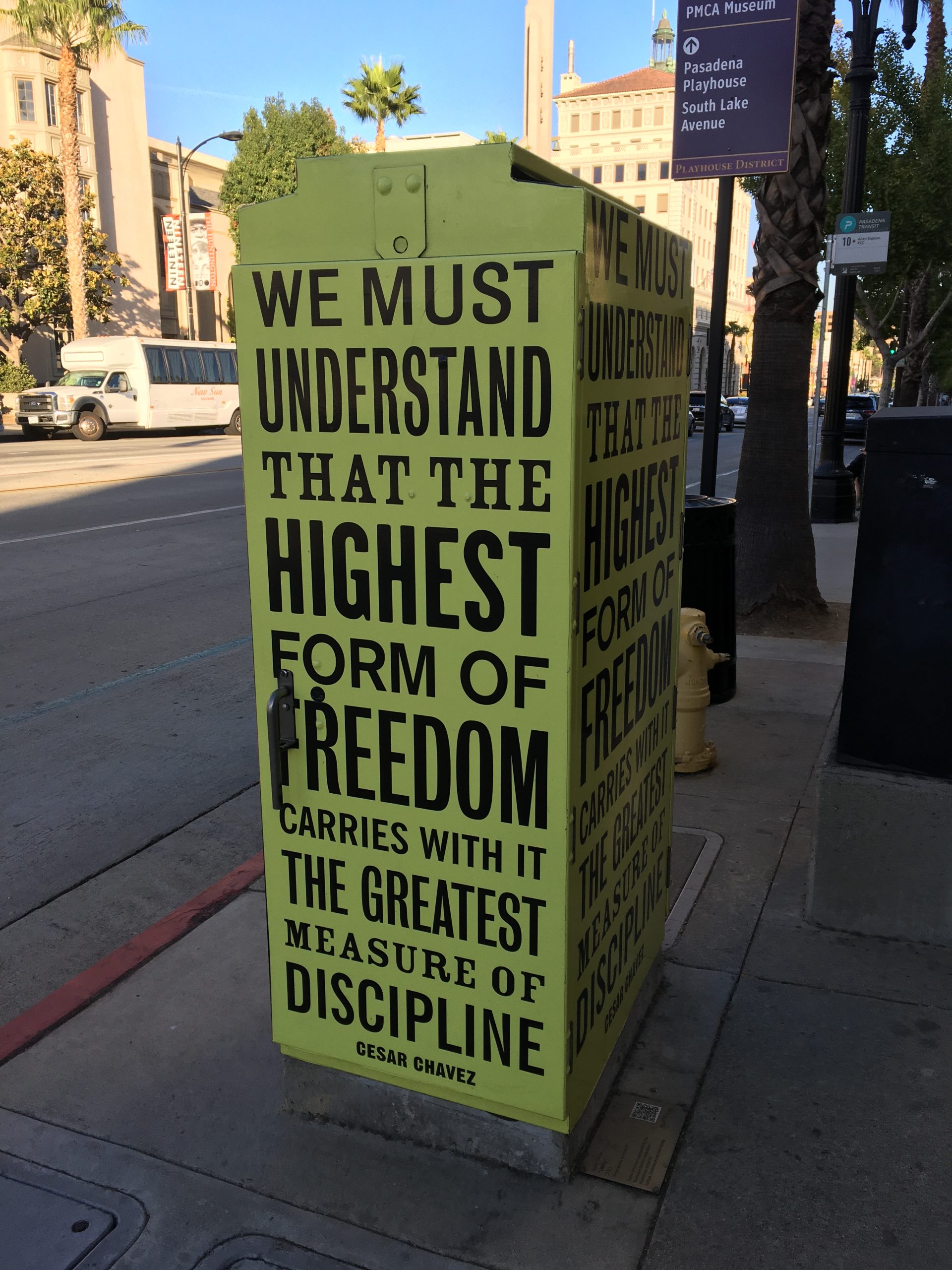
I stumbled upon a street fair in honor of Day of the Dead. There were many talented artists selling their wares, vendors, music, dancing, a puppet show, and chalk art! There were a lot of people out and about enjoying the festive atmosphere.


I, of course, had to visit the local independent bookstore, Vroman’s!
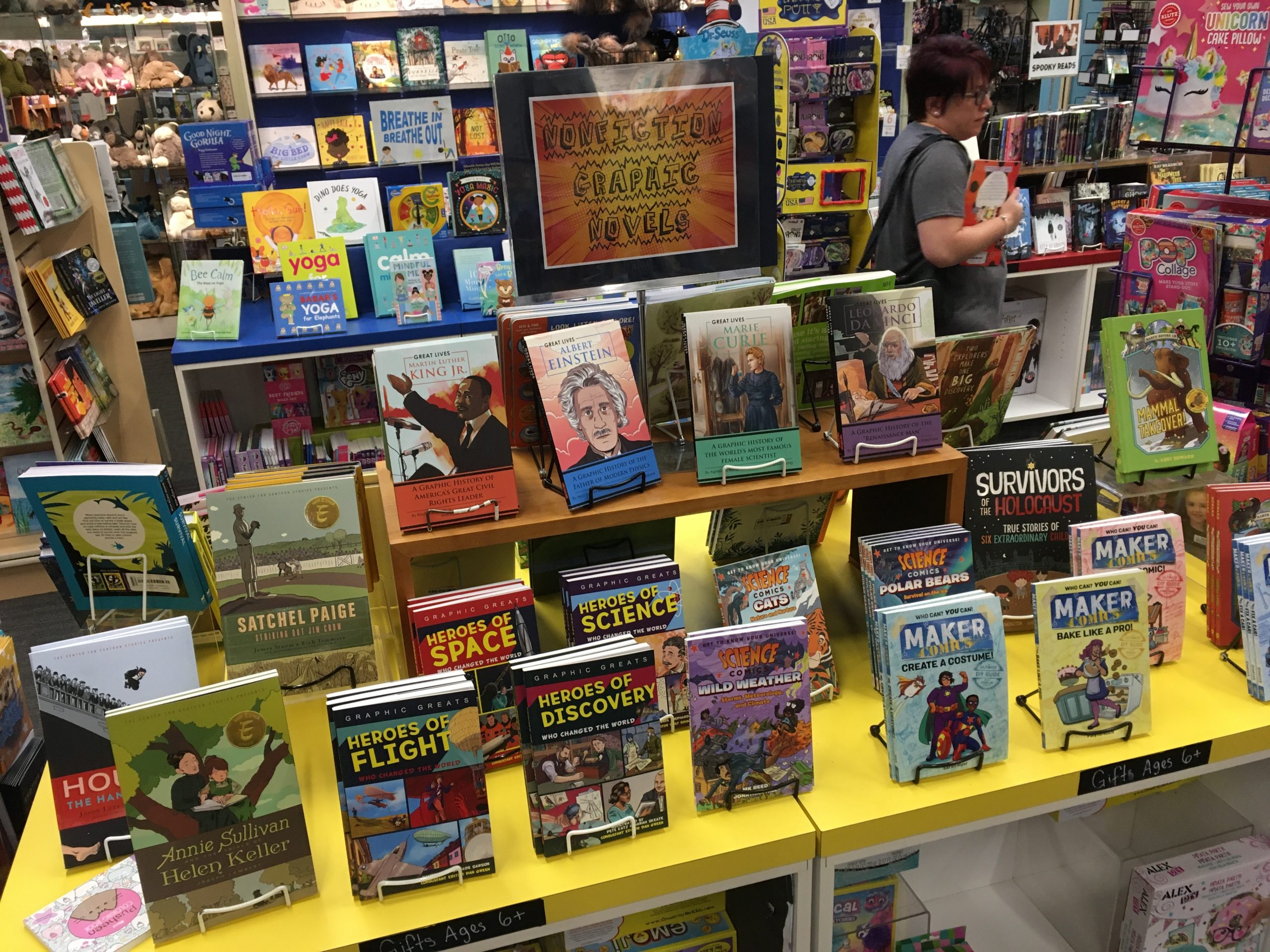
The nice young women working there recommended Trejo’s Cantina for dinner, and it was so delicious!

The Vroman’s gals also told me not to miss the new ice cream shop in town, Wanderlust, which features flavors based on exotic travel destinations. They had me at ice cream! It was well worth the walk. I chose honey lavender, and it was divine.
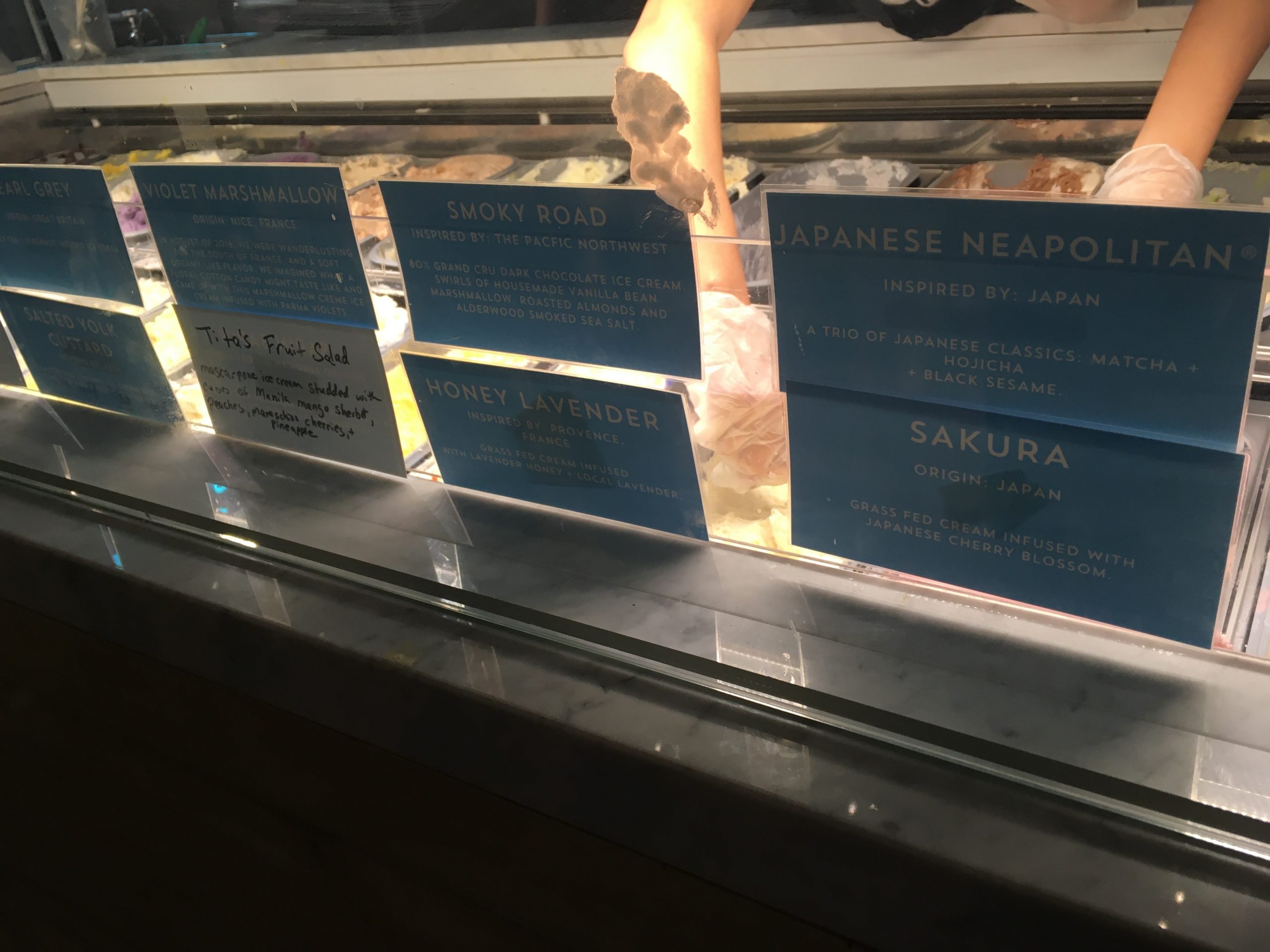
As you can see, it was an amazing trip. Thank you so much, California young readers! 🙂
Happy book birthday to Forces of Nature!
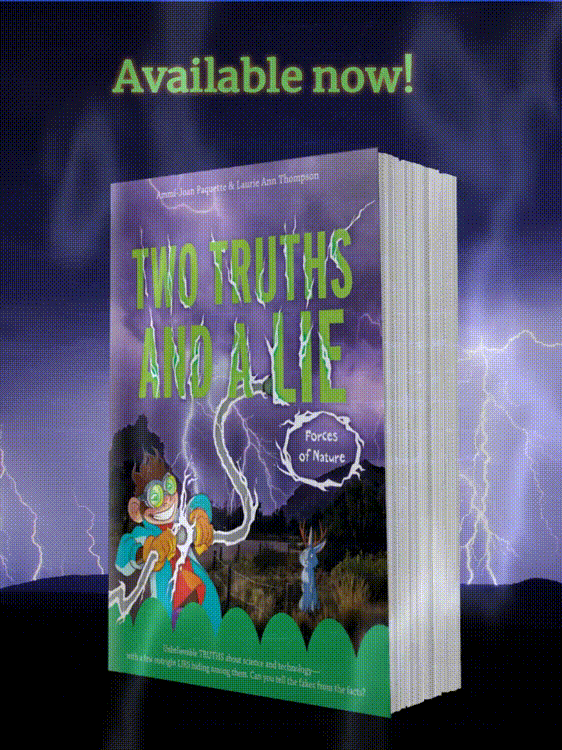
TWO TRUTHS AND A LIE: FORCES OF NATURE, the third book in the series, is finally here! So, what’s this one about? Here’s an overview:
Crazy-but-true stories make this acclaimed nonfiction series perfect for fans of curiosities and wonders—and anyone looking to explore ways to separate fact from fiction.
Did you know studies have shown that too many fidget spinners spinning in the same direction could potentially have an adverse effect on Earth’s gravitational field? Or that there’s a company that can turn your deceased loved one’s remains into a diamond? Or that the loudest recorded sound in history was made by the eruption of a volcano in 1883, whose echoing blast circled the planet at least three times?
Welcome to Two Truths and a Lie: Forces of Nature! You’ve heard of the game: Every story in this book is strange and astounding, but one out of every three is an outright lie. Picking out the fakes isn’t as easy as you think, however. Some false stories are based on truth, and some of the true stories are just plain unbelievable! Don’t be fooled by the photos that accompany each story—it’s going to take all your smarts and some clever research to ferret out the truth.
From a man who gave himself an appendectomy to radio signals from other planets to eagles that have been trained to take out spy drones, the stories in this third installment in the Two Truths and a Lie series will amaze you! Just don’t believe everything you read.…
(Walden Pond Press/HarperCollins, June 2019)
Creating a book is a highly collaborative process, and this book has had an incredible team working on it from day one. Many, many thanks to my co-author, Ammi-Joan Paquette; our agent, Erin Murphy; our editor, Jordan Brown; and all the wonderful folks at Walden Pond Press and HarperCollins. It’s been an honor and a joy to work with you all on this book and the entire TWO TRUTHS AND A LIE series!
Buy it now, at your local independent bookstore, or anywhere books are sold!
What I’ve Been Up To This Month
The month isn’t even over yet, but so much has been packed into the last few weeks it feels more like two months already! That’s not exactly an excuse for neglecting the blog, but, you know, life happens. Anyway…
Beachside Nonfiction Workshop
I started out the month at the Beachside Nonfiction Workshop with Candace Fleming & Jennifer Swanson. It was amazing! The faculty were all stellar, the location was gorgeous, and the attendees were lovely. It was fun hanging out with other nonfiction geeks for an entire weekend. We all struggled to answer the “So, what do you write?” question, however, since we can usually just get away with “Nonfiction,” and have that be the end of it! I didn’t take nearly enough photos, but here’s the view from my hotel balcony…

Yes, it was hard work. There were a lot of sessions, and they were mostly master level, plus networking and critiques. I came away with so much useful information and new ideas to apply to my works in progress. There were obviously some other perks, too!
Seattle Reading Council Appearance
In the middle of the month, some of the members of my critique group (and all agency-mates at Erin Murphy Literary, as it turns out!), did an appearance at the Seattle Reading Council. It was a billed as a “Books and Chocolate” event… what could be better?! We each talked about our books and process and then took questions. The crowd was mostly teachers and librarians, so it made for a wonderful evening of sharing book love (and chocolate!) among likeminded new friends.

School visits
I had an elementary school visit where I got to talk to several third-grade classes about my writing journey, grit, and writing with emotion, as well as several fifth-grade classes about evaluating sources and spotting fake news. It was an awesome visit with super-engaged audiences, but alas, no photos. You’ll have to take my word for it!
I have another visit coming up early in June (the last one of the school year!), so I’ve been making sure everything is ready for that one, too.
SCBWI-WWA Spring Conference
Finally, I attended and helped with the SCBWI Western Washington’s spring conference, Imagine That! It was a great weekend: hearing from inspiring speakers, getting feedback on one of my works in progress from a powerhouse editor, and catching up with author and illustrator friends in the industry. I’m still soaking it all up and processing what was said! Good stuff.
Book Releases!
Along with all of that I’ve been getting ready for the Two Truths and a Lie: Histories and Mysteries paperback release on May 21 AND preparing for the upcoming new release of Two Truths and a Lie: Forces of Nature on June 25th! I’ve designed and ordered postcards and swag, scheduled social media announcements, and made other plans to get the word out.


Works in Progress…
And, of course, there are those works in progress, too! Earlier this month I submitted both a nonfiction picture book revision and a graphic novel proposal to my agent. I’m currently revising a nonfiction picture book, a fiction picture book, and a middle-grade nonfiction manuscript. I’m also working on a brand-new nonfiction picture book draft and a young-adult nonfiction proposal. Busy, busy!
Yes, I do love my job. More so every day, in fact! =D
Happy National Trivia Day!
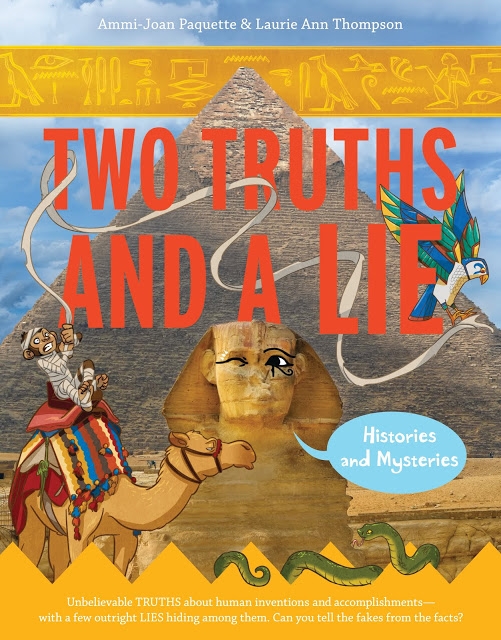
It may itself be a little-known fact, but January 4th is National Trivia Day! To celebrate, I thought I’d post some trivia tidbits from Two Truths and a Lie: Histories and Mysteries. Remember, ONE of the claims in each set of three below following is false. Can you figure out which one in each trio is the fake trivium? (Did you know trivia is the plural of trivium?)
A.
- There’s an abandoned cruise ship loaded with crazed, cannibal rats drifting around somewhere in the Atlantic Ocean. Beware!
- A banyan tree in Pakistan was put under arrest by a British army officer in 1898 and is still in chains today. Pardon, anyone?
- It’s illegal to chew gum in Singapore.
B.
- Ben Franklin wrote a treatise on why scientists should try to find a way to make farts smell better.
- Dog Island is an island oasis dedicated to letting dogs live out their wilder natures, undisturbed by humans. Be free, Fifi.
- There’s an annual festival in Spain centered around throwing tomatoes at people. Food fight!
C.
- The oldest known dental fillings date back to between 12,740 and 13,000 years ago, and they were filled with, essentially, tar. Ew.
- It’s illegal to own a pet turtle in Iceland, and 1 in 10 children there grow up to become authors.
- I was once trapped in an elevator, alone, overnight. Scary!
If you don’t know all of the answers, go do some research and see if you can figure them out! But be careful… things might not always be what they seem at first glance, and truth often is stranger than fiction.
For even more trivia fun, check out this post from MentalFloss on National Trivia Day last year. I especially love the one about Ben & Jerry’s ice cream. (I’m a huge fan of their new Urban Bourbon flavor!)
If you enjoyed these true (and not so true) trivia facts for National Trivia Day, or want to check your answers, make sure to check out the book: Two Truths and a Lie: Histories and Mysteries!
Do you have any favorite trivia tidbits? Please post them in the comments below (and be sure to warn us if they might not be 100% true)!
Happy holidays (and a gift idea)!
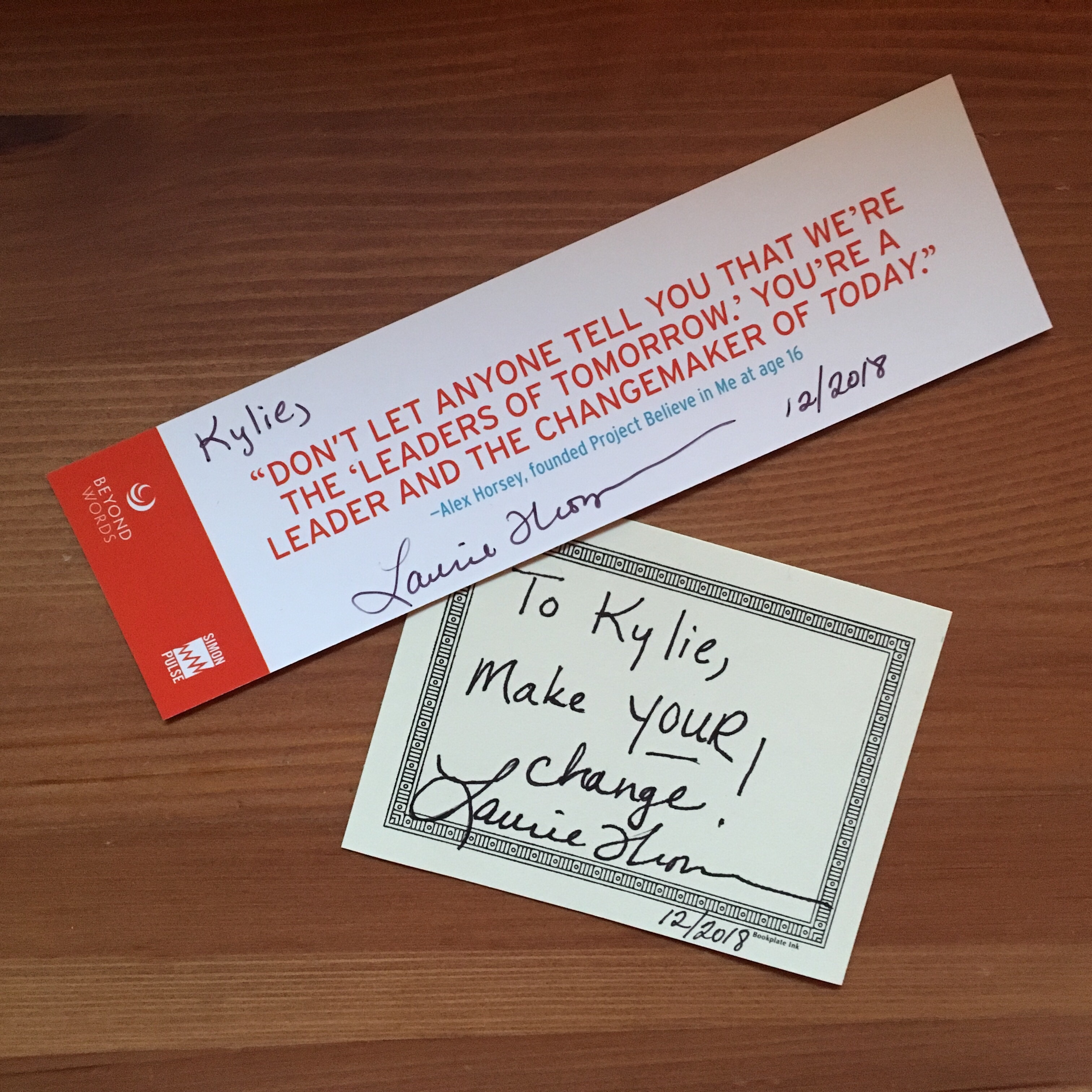
Are you buying any of my books to give as a gift this holiday season? If so, thank you!
I’d be thrilled to send you a signed bookplate and some book swag for you to include with your gift. Just send an email to laurie@lauriethompson.com with the details (which book, to whom it should be personalized, and what mailing address you’d like it sent to), and I’ll pop them in the mail for you ASAP.
And, again, thank you! It’s like giving a gift to me, too. =D
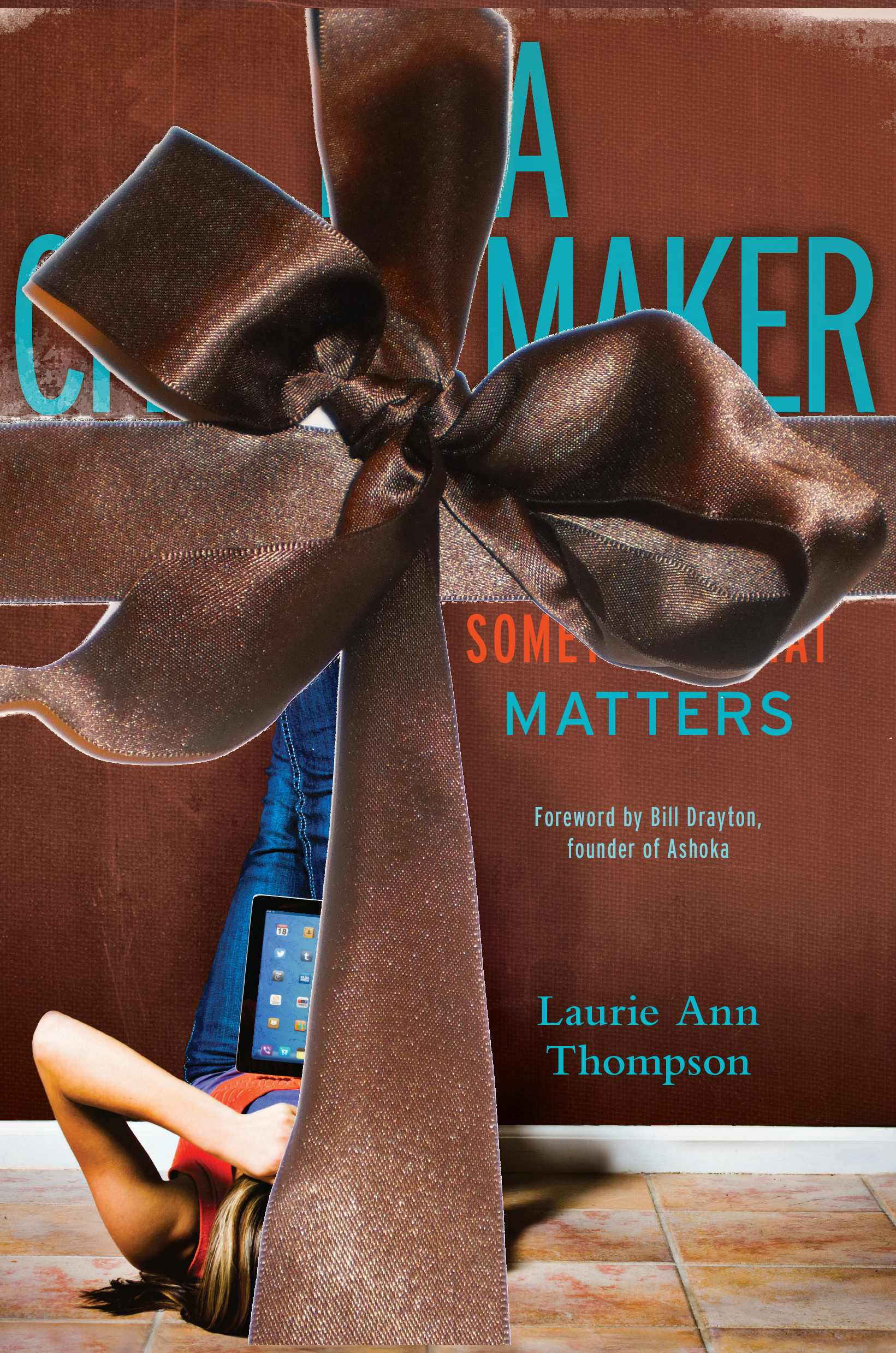
Review: Three Stars in the Night Sky
THREE STARS IN THE NIGHT SKY
by Fern Schumer Chapman
Gussie Rose Press/June 6, 2018
Grades 5–8, 56 pages
Here’s what the publisher says:
At the age of 12, Gerda Katz fled Nazi Germany and came to America all by herself. Decades before the label gained recognition, she became what’s now known as an “unaccompanied minor.” Gerda’s story of family separation reflects the dislocating trauma, culture shock, and excruciating loneliness many unaccompanied minor immigrants experience. As Gerda becomes an American, she never stops longing to be reunited with her family. Three Stars in the Night Sky illuminates the personal damage of racism in three countries – Nazi Germany, the Dominican Republic, and the United States during the 1930s and 40s — and the emotional devastation of a child coming to a new country alone.
And here are my thoughts:
This was an engaging, up close and personal look at an historical event that is sadly still relevant today for many reasons, including understanding World War II, anti-Semitism, refugees, and the very real impacts of immigration policies. There is also local relevancy here in western Washington state, as Gerda emigrated to Seattle to escape the persecution of Jews in Germany in 1938 and wound up facing the internment of the region’s Japanese-American citizens. I found the story and accompanying images to be interesting as well as informative. The format makes it looks like a picture book, but I would not recommend it for younger readers due to the sensitive topics covered and the way in which they are presented here. Highly recommended for grades 5 and up, however, whether as part of learning more about the World War II era or looking at current events through a historical lens. Gerda’s story will stick with me for some time to come, and I’m thankful to have had the opportunity to read about it.
For more books by this author, visit https://fernschumerchapman.com/.
*** Disclosure: I received a review copy from the publisher as part of judging the CYBILS contest. ***
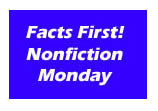
Review: Votes for Women!

Votes for Women! American Suffragists and the Battle for the Ballot
by Winifred Conkling
Algonquin Young Readers, February 13, 2018
Grades 8–12, 320 pages
Here’s what the publisher says about Votes for Women!:
For nearly 150 years, American women did not have the right to vote. On August 18, 1920, they won that right, when the 19th Amendment to the Constitution was ratified at last. To achieve that victory, some of the fiercest, most passionate women in history marched, protested, and sometimes even broke the law—for more than eight decades.
From Susan B. Anthony and Elizabeth Cady Stanton, who founded the suffrage movement at the 1848 Seneca Falls Convention, to Sojourner Truth and her famous “Ain’t I a Woman?” speech, to Alice Paul, arrested and force-fed in prison, this is the story of the American women’s suffrage movement and the private lives that fueled its leaders’ dedication. Votes for Women! explores suffragists’ often powerful, sometimes difficult relationship with the intersecting temperance and abolition campaigns, and includes an unflinching look at some of the uglier moments in women’s fight for the vote.
By turns illuminating, harrowing, and empowering, Votes for Women! paints a vibrant picture of the women whose tireless battle still inspires political, human rights, and social justice activism.
And what the critics say about Votes for Women!:
- “This is a fascinating account of the bumpy road to women’s suffrage in the U.S.… Well-chosen black-and-white archival reproductions and photographs ably support the text, which makes excellent use of primary sources, including excerpts from letters and writings to bring key personalities to life.” —The Horn Book Magazine (starred review)
- “From the first Women’s Rights Convention in Seneca Falls in 1848 to the ratification of the 19th Amendment in 1920, this is a commanding and relevant account of sweeping, hard-won social reform and action.” —Publishers Weekly (starred review)
- “Spanning multiple centuries, this work may be the most comprehensive account for young readers about the founders, leaders, organizers, and opponents of the American suffragist movement … Conkling delivers a tour de force.” —Kirkus Reviews (starred review)
- “Looking for a comprehensive, well-written history of women’s fight for the right to vote? You’ve found it. Conkling draws readers in … this is great for research as well as a good read.” —Booklist
- “The intense drama of the 72-year battle for women’s suffrage springs vividly to life from the pages of this compulsively readable account.” —School Library Journal
And here are my thoughts about Votes for Women!:
I listened to this one as an audiobook as part of judging the CYBILS contest. I also plan to check out the print version so I can see the images and backmatter.
From the opening scene to the final chapter, I was completely drawn in. I thought I knew a fair bit about the history of the women’s suffrage movement, but it turns out I had only superficial knowledge of the people and events involved. I’m grateful to have been enlightened, although I’ll admit the experience wasn’t always easy nor pleasant. There were times when the injustices and insults endured by the women made me sputter with outrage. And there were other times when I was, literally, reduced to tears by the way they were treated. But mostly I was grateful for the courage and persistence of these heroic female leaders and buoyed by it. Conkling has brought these icons to life and given us a peek inside their daily lives in addition to their well-known accomplishments. I found it thoroughly engaging.
This book should be required reading in schools for both girls and boys. It offers important lessons not only in history but also in equality and fairness, grit and determination, group dynamics and social interactions, and power and process. It also feels quite timely in this era of resistance, activism, and #MeToo. Highly recommended.

Review: Capsized! by Patricia Sutton
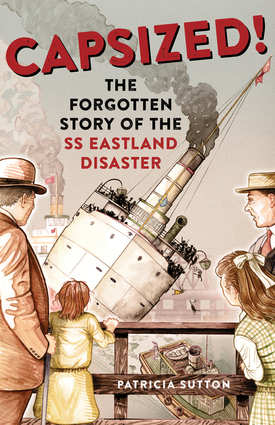
Capsized! The Forgotten Story of the SS Eastland Disaster
by Patricia Sutton
Chicago Review Press (July 1, 2018)
Grades 5–8, 176 pages
Here’s what the publisher says about Capsized!:
A fascinating historical account of courage and tragedy on the Chicago River
On July 24, 1915, the SS Eastland, filled to capacity with 2,500 passengers and crew, capsized in the Chicago River while still moored to the pier. Happy picnic-goers headed for an employee outing across Lake Michigan suddenly found themselves in a struggle for their lives. Trapped belowdecks, crushed by the crowds attempting to escape the rising waters, or hurled into the river from the upper deck of the ship, roughly one-third of the passengers, mostly women and children, perished that day.
The Eastland disaster took more passenger lives than the Titanic and stands today as the greatest loss of life on the Great Lakes. Capsized! details the events leading up to the fateful day and provides a nail-biting, minute-by-minute account of the ship’s capsizing. From the courage of the survivors to the despair of families who lost loved ones, author Patricia Sutton brings to light the stories of ordinary working people enduring the unthinkable.
Capsized! also raises critical-thinking questions for young readers: Why do we know so much about the Titanic’s sinking yet so little about the Eastland disaster? What causes a tragedy to be forgotten and left out of society’s collective memory? And what lessons from this disaster might we be able to apply today?
And what the critics say about Capsized!:
-
- “A true disaster story rivetingly told.” —Kirkus Reviews
- “A badly designed ship, a careless captain, and decks jammed with 2,500 passengers are a recipe for disaster. Patricia Sutton describes the tragic launching of the SS Eastland in a dramatic, riveting narrative filled with the vivid firsthand accounts of those onboard that brings readers along on a harrowing day trip.” —Jim Murphy, author of Newbery Honor titles The Great Fire and An American Plague
- “A riveting page-turner sure to grab readers’ attention. Patricia Sutton’s well-researched Capsized! will leave you shocked, saddened, and unable to put it down.” —Kate Hannigan, author of The Detective’s Assistant
- “Through meticulous research and vivid prose, Sutton brings to life the little-known story of the Eastland ship disaster. Based on firsthand accounts of passengers, ship workers and bystanders, readers can experience the people and events that led to the sinking of the fastest steamship on the Great Lakes and its tragic aftermath.” —Claire Rudolf Murphy, author of Gold Rush Women and Marching with Aunt Susan
- “The narrative-driven account, filled with quotes from individuals and newspapers, historical photos, and trial transcripts, is engaging and accessible…Extensive source notes, which account for every quote, as well as a bibliography, round out this informative, engrossing title.” —Booklist
- “Capsized! is an excellent book for historical research and highly recommended for both middle and high school libraries.” — KidsReads
And here are my thoughts about Capsized!:
I read this one as part of judging the CYBILS, and I could not put it down! I started reading it one night in bed, intending to get in a quick chapter or two before turning off the light, but I didn’t stop until I’d read every last page.
I’m shocked, and frankly a little appalled, that I’d never heard of this event before. Thankfully, Sutton chose to dedicate herself to telling this little-known story, and she tells it very well. The book itself reads with all the suspense and drama of a well-paced novel, but you can see the research that went into this true story in the included source notes and bibliography. I particularly appreciated how Sutton spelled out the various cumulative reasons for the disaster: there are many important lessons to be learned from this story. I also appreciated the very human connections Sutton built, letting us feel like we really get to know many of the passengers and their actions on that tragic day: there are lessons to be had there as well.
Giving readers both the factual account of an event and its emotional resonance from multiple viewpoints is not easy to do. This book pulls it off; an excellent example of narrative nonfiction and one I expect I’ll be going back to as a mentor text. Highly recommended!


